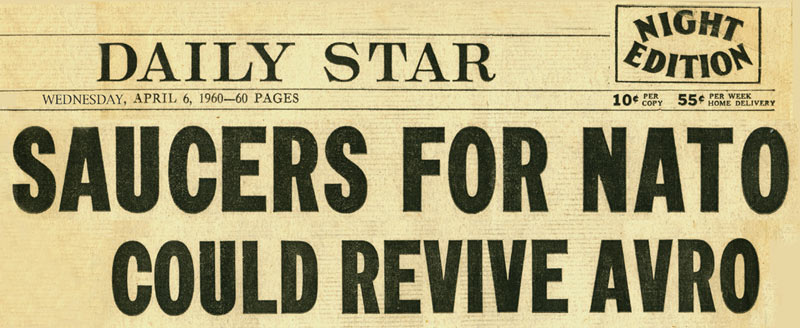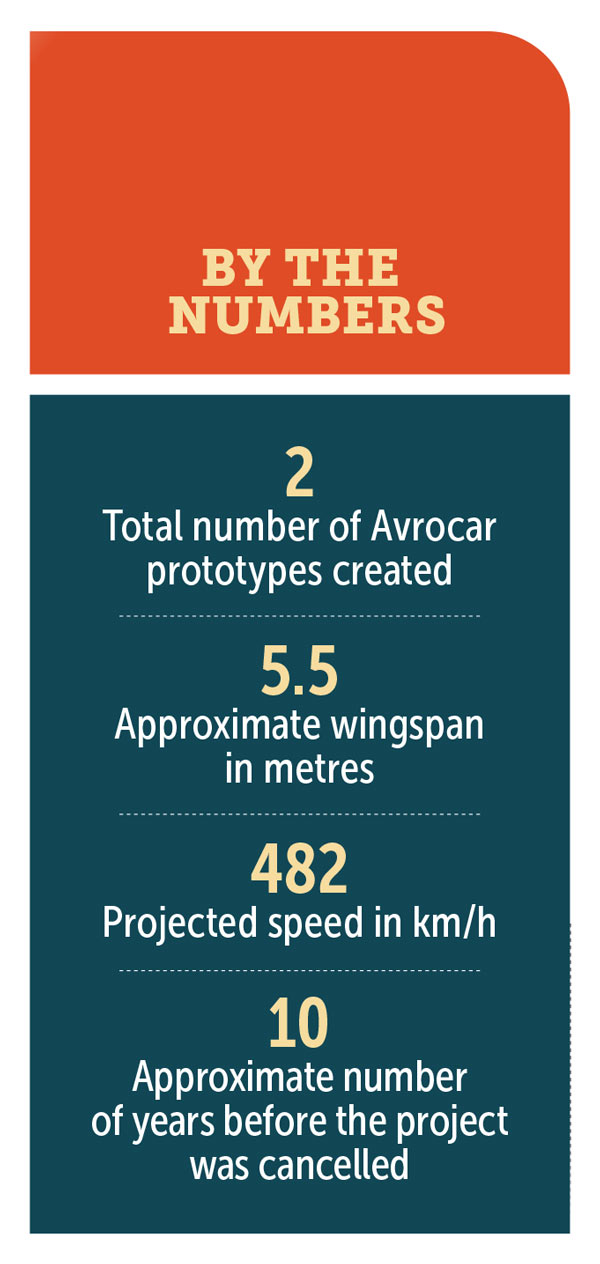
From tech specs to test models, the 1950s-era Avro Canada Avrocar was part of an initiative to develop a vertical take-off and landing fighter bomber. [National Museum of the United States Air Force]
At about 11:00 a.m. on Feb. 20, 1959, Prime Minister John Diefenbaker stood in the House of Commons and, largely unexpectedly, announced the termination of the Avro Canada CF-105 Arrow project. What followed was the virtual disintegration of Canada’s aviation industry at a pivotal time in airborne innovation.
The Arrow’s fate, meanwhile, was almost shared by another, albeit stranger, company initiative: the Avrocar.
Originally part of efforts to develop a supersonic VTOL (vertical take-off and landing) fighter-bomber, the invention had seldom met expectations. After the Arrow’s demise and with Avro Canada gutted by widespread redundancies, the pressure was on to transform such a curious creation—easily mistaken for a 1950s sci-fi flying saucer—into a state-of-the-art, lethally efficient engineering miracle.
The issue was that the Avrocar had long struggled to take off—literally and figuratively—with no breakthrough in sight.

From tech specs to test models, the 1950s-era Avro Canada Avrocar was part of an initiative to develop a vertical take-off and landing fighter bomber. [National Museum of the United States Air Force]
“Disc-shaped aircraft were built by the Germans as early as 1933,” explained Jason Eldridge, the Avro Museum’s collections manager and treasurer. “At the end of the Second World War, the United States made efforts to secure relevant intelligence that could be of considerable value to the Allies.”
This idea, along with postwar advances in aircraft technology, drove A.V. Roe (Avro) Aircraft (later Avro Canada) expert John (Jack) Frost to assemble a special projects group in 1952.
Allocated $400,000 in government funding, the elite team of scientists and engineers began drawing plans for a high-altitude, circular-winged aircraft based on relatively new, if yet-to-be-mastered, aerodynamic principles.
In reality, the Avrocar was probably never going to become the final realization of its ideas.
“The easiest way to understand the aircraft is to think of a hovercraft,” said Eldridge. “Air would be vectored to raise and propel it in the desired direction, utilizing three Continental J69-T9 engines to turn a central turborotor.”
Despite additional financial support—perhaps most crucially from the United States Air Force—years’ worth of studies failed to the meet lofty aspirations. Development halted until 1958, when American military authorities took a renewed interest.
The latest in cross-border co-operation helped produce two prototype vehicles with somewhat more modest performance expectations. One remained in Canada; the other was shipped to the U.S.
The VZ-9AV Avrocar, as it was then named, was born.
But its woes were far from over.
William McLaughlin, curator of the National Museum of the United States Air Force, noted just some of its many shortcomings: “The Avrocar could generate lift for it to climb a few feet off the ground, but it often became uncontrollable during flight. Test engineers characterized it as entering an unrecoverable ‘hubcapping’ state [oscillation around the airframe’s pitch and roll axis].
“There were also issues with symmetry, an unanticipated lack of thrust generation, and inadequate low-speed control. In reality, the Avrocar was probably never going to become the final realization of its ideas.”
Ultimately, no amount of adjustments could prevent the two-man flying saucer-esque aircraft from meeting its demise. The project was cancelled in 1961.
Still, says McLaughlin: “The Avrocar is one testbed of a nascent idea that matured into a key attribute of the most advanced aircraft in service. You might have to squint to see, but it has a place within the maturation of today’s air force.”
Advertisement

























